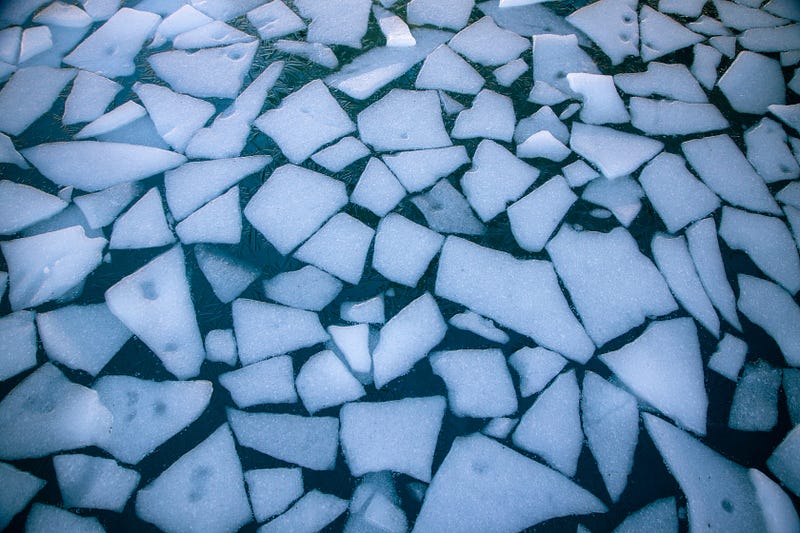Unveiling the Scientific Mysteries Hidden in Ice
Written on
Chapter 1: The Enigma of Earth's Icy Regions
The remote and harsh icy areas of our planet are teeming with scientific wonders, waiting to be explored. From polar ice caps to glaciers and permafrost, ice plays a crucial role in our ecosystem. Scientists are increasingly focused on these frozen environments to reveal the secrets they hold.

Ice Cores: A Historical Archive
One of the key instruments for understanding Earth's climate history is the ice core. Researchers drill deep into polar ice caps to extract samples that can be hundreds of thousands of years old. These samples contain trapped air bubbles, which act as time capsules of the Earth’s past atmosphere and climate.
“Ice cores provide the most direct evidence of the past climate, as they are a unique archive of past changes in the Earth’s climate system.” — European Project for Ice Coring in Antarctica
By analyzing these air bubbles, scientists gain insights into historical levels of greenhouse gases, temperature fluctuations, and precipitation trends. This data is essential for comprehending how our planet's climate has evolved and for making informed predictions about future changes.
Microbial Life in Ice
Recent studies have unveiled a hidden ecosystem of microbes thriving within the ice. These resilient organisms have adapted to the extreme conditions of the polar regions and are crucial for nutrient cycling, maintaining ecological balance.
“Microbes living in ice sheets and glaciers constitute an important and dynamic part of Earth’s biosphere.” — Journal of Glaciology
Investigating these microorganisms allows scientists to understand the intricate interactions in these isolated environments and explore how life might adapt to extreme settings, shedding light on the potential for life beyond Earth.
The Dynamics of Ice Sheets
Research is also intensifying around the dynamics of ice sheets, particularly in Greenland and Antarctica. These colossal ice formations are rapidly melting due to climate change, prompting scientists to investigate the underlying processes.
“The ice sheets of Greenland and Antarctica are melting faster than ever, and thus, global sea level is rising more and more rapidly.” — Scientific Reports
By examining the movement of ice and the factors contributing to its melting, researchers can create more precise models for sea level rise, helping communities prepare for the impending impacts of climate change.
The frozen regions of the Earth harbor a plethora of scientific secrets, from microscopic life forms to ancient air bubbles. As climate change reshapes our world, understanding these hidden phenomena is crucial for forecasting future scenarios and developing effective adaptation strategies.
Supporting research in polar areas and investing in advanced technologies will deepen our understanding of the intricate systems that govern our planet, paving the way for a sustainable future.
The first video explores the most astonishing discoveries related to the secrets hidden in ice, highlighting remarkable scientific findings in these cold environments.
The second video delves into what experts uncovered beneath 4600 feet of ice, providing insights into the ancient climate and ecosystems preserved in the ice.
Chapter 2: The Science of Ice and Its Applications
The Science Behind Skating on Ice: Understanding the Properties of Ice
Exploring how slip planes, temperature, impurities, and pressure contribute to the unique qualities that allow ice skating to be possible.
The Fascinating World of Plasma: A Comprehensive Guide
An in-depth look at the fourth state of matter, its practical uses, and its significance in scientific inquiry.
The Dark Side of Screens: What They Do to Our Eyes
Understanding the effects of blue light on our vision and strategies to protect our eyes.
The Power of the Brain in Dangerous Situations
Examining how our brains respond and make rapid decisions in moments of peril.
Understanding the Science Behind Nightmares
A study of the biology and psychology surrounding sleep disturbances.